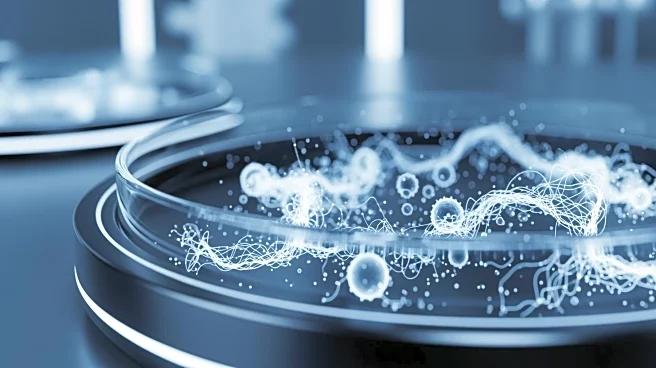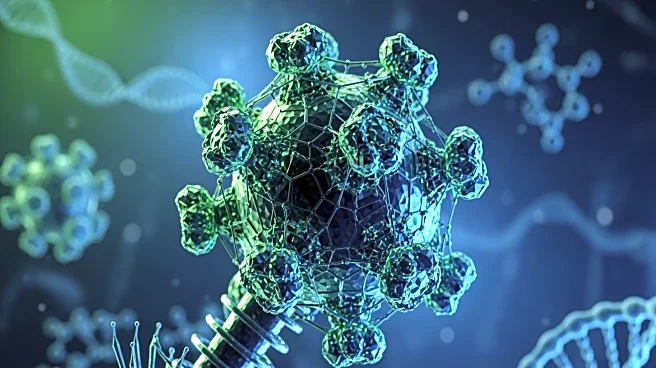What's Happening?
Recent research has focused on the molecular docking and dynamics simulation of antimicrobial peptides (AMPs) against adhesion proteins of peri-implant pathogens. The study utilized FimA and BspA proteins as molecular targets,
with a homology model generated for BspA due to the absence of a crystal structure. Three AMPs were selected: LL-37, Tachystatin A2, and a Thermolysin-derived peptide fragment. These peptides were chosen for their broad-spectrum antimicrobial activity and structural diversity. The research aimed to optimize sustained peptide release to prevent early biofilm formation while minimizing cytotoxicity to host cells. Molecular docking simulations were performed using AutoDock Vina, and molecular dynamics simulations were conducted using GROMACS. The study highlighted the importance of balancing antimicrobial activity with potential cytotoxicity and proposed approaches using pH-sensitive linkers or nanoparticle carriers.
Why It's Important?
The study's findings are significant for the medical field, particularly in the context of implant surgeries where peri-implantitis can lead to severe complications. By optimizing the release kinetics of AMPs, the research aims to enhance the effectiveness of these peptides in preventing biofilm formation, a common issue in implant-related infections. This could lead to improved patient outcomes and reduced healthcare costs associated with treating infections. Additionally, the study's focus on minimizing cytotoxicity is crucial for ensuring the safety of AMP-based treatments. The research contributes to the development of more effective and safer antimicrobial strategies, which are essential in the fight against antibiotic-resistant pathogens.













